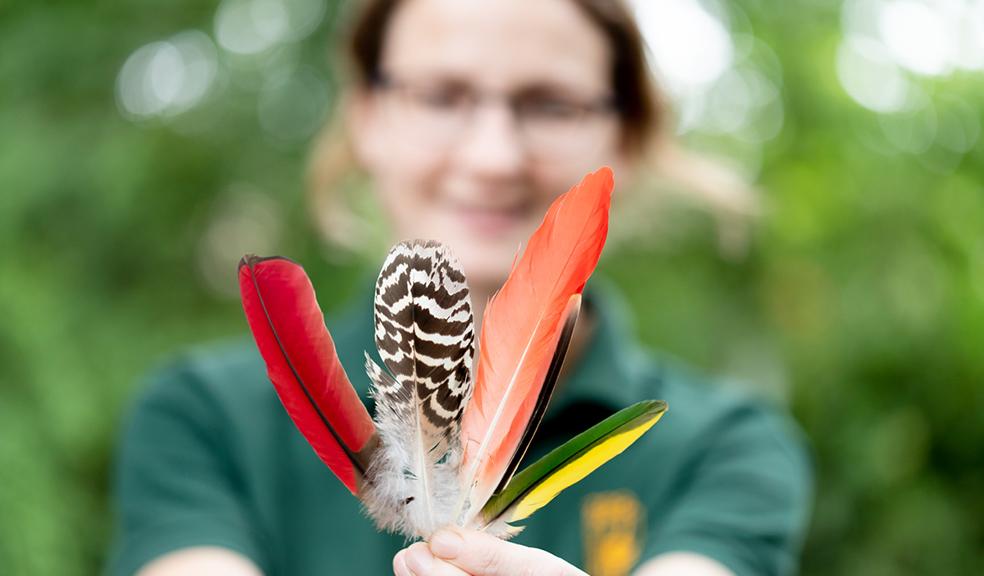
On the wing: in celebration of the feather
Paignton Zoo bird keeper Lisa Jones freely admits that she has an interest that borders on obsession. She’s fascinated by feathers.
“During the summer months, lots of birds at Paignton Zoo start to moult… I think feathers are among the natural world’s most incredible adaptations. While I was cleaning out the Ural owls, who are moulting heavily now, I wondered if anyone else would be as interested in feathers as me!”
It turns out, yes. Feathers are the often overlooked wonders of nature. We might admire a bird, but do we stop to ask what feathers are, why they are like they are – and why they fall out?
There are (roughly) four hundred billion birds on this planet. That’s an awful lot of feathers. Wild Planet Trust spokesperson Phil Knowling: “Feathers are engineering and artistic marvels. What they do and the range of colours and patterns they come in is extraordinary. A bird’s feathers form the ultimate suit - sunscreen, wetsuit, camouflage and fashion statement all in one.”
Why do feathers fall out? Because they wear out. Moulting is nature’s way of maintaining and refurbishing these vital pieces of equipment. Curiously, the first purpose of feathers is not thought to have been flight, but temperature control and ornamentation. They can also be used in communication and for waterproofing. Flying, it seems, was an evolutionary afterthought…
Lisa: “Moulting depends on ecology and lifestyle. Most species moult once a year, usually after breeding, to ensure they have fresh new feathers for the year ahead. Some species will moult two or three times a year. The ptarmigan changes colour for camouflage; it’s white as snow in winter, mottled white and brown as the snow melts and grey-brown in the summer and autumn.”
There are different strategies. Normal moulting involves the replacement of all feathers gradually, so the bird can still fly and keep warm. Penguins experience what’s known rather alarmingly as a catastrophic moult – they lose all their feathers in one go. If they lost them slowly, their waterproofing would fail. This puts them out of action for a few weeks, but then they are set up for the rest of the year. You can see it happening at Living Coasts – it can look like there’s been an explosion in a cuddly toy factory…
Another sort of moult results in what’s known as an eclipse plumage. Most ducks shed their feathers twice a year; drakes lose their bright plumage after mating, and for a while look like females. Then they get ready for the mating season with a new, bright set of feathers.
Lisa: “Some large species, like vultures, can take up to two years to replace every feather – they can’t afford to be grounded, so their bodies lose and replace a few feathers at a time. Incredibly, they moult the same flight feather on each wing simultaneously, so they keep their balance when flying! Moulting is hard work. It takes up a lot of energy and it can be very uncomfortable – which is why many birds become quite grumpy when moulting!”











